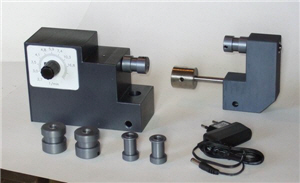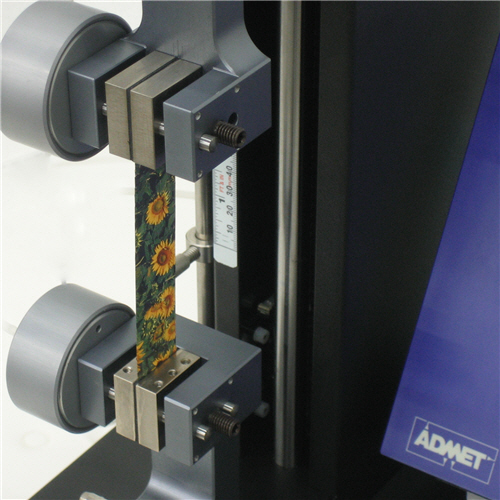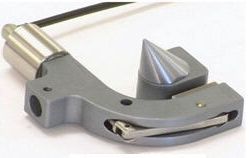ASTM D1414 (D 1414) covers multiple properties of O-Rings. Part of the specification includes tension testing for determining the breaking force, tensile strength, and ultimate elongation of an o-ring. The tension test is intended to be performed on a universal testing machine (tensile testing machine). If you are going to perform this test, you should read the entire specification from ASTM. This is a quick summary to decide if this test is right for you, and to point out what equipment you need to perform the test.
Rubber O-Ring Tensile Strength Testing - ASTM D1414
Topics: ASTM Tests, rubber, Tensile Test
How to Perform an ASTM D882 Plastic Film Tensile Strength Test
One of the most common specifications that our customers follow is ASTM D882 which is the Standard Test Method for Tensile Properties of Thin Plastic Sheeting. This test is very similar to the common ASTM D638 test whereby plastic material is pulled until in breaks in order to measure elongation, tensile modulus, tensile yield strength, and tensile strength at break. However, it is designed specifically for thin sheeting and film less than 1 mm (0.04") thick.
Topics: ASTM Tests, Plastic, Tensile Test, Film
How to Perform an ASTM D2256 Thread and Yarn Tensile Strength Test
To determine the breaking strength, elongation, etc. of threads, yarns, or other single strand textiles, ASTM D2256 is by far the most common specification that is followed. This is a relatively simple tensile test whereby thread is pulled at a constant rate of speed until it breaks. Please see the video below that shows how the test is performed:
Topics: ASTM Tests, Textile, Tensile Test
Biaxial - torsion and tension universal testing machine
Topics: Torsion, Tensile Test, Biaxial
Needle Syringe Force Test on a Universal Testing Machine
Topics: Compression Test, Biomedical, Tensile Test, delivery device
Rubber Adhesion Testing Equipment Requirements ASTM D413 & ASTM D378
This video shows an example of a Rubber Property Test - Adhesion to Flexible Substrate as specified in ASTM D413 (D 413) & ASTM D378 (D 378)
Topics: ASTM Tests, rubber, Tensile Test, Adhesive
Measuring closing force with a universal testing machine
This test measures the force required to close a lid on a travel coffee mug. We used our eXpert 2610 universal testing machine to perform the test, but it would have worked just as well with one of our smaller single column eXpert 7601 or eXpert 5601 testers.
Topics: Compression Test, Plastic, Packaging
Tennis Ball Compression Deformation Testing
To perform the test on a tennis ball, do the following:
Topics: Compression Test, rubber
Two pieces of nonwoven fiber joined at the edges by sewn thread are pulled apart at a constant rate of speed to measure the maximum peak force of the seam. Video below:
Topics: Textile, Tensile Test, Packaging
This test stretches plastic medical catheter tubing until it fractures to measure its maximum elongation and tensile strength. We used our high elongation / low force eXpert 7601 single column testing machine equipped with a pair of bollard grips that are designed to hold tubular and cord type products in tension tests without creating premature breakage caused when using standard vise or wedge grips.
Topics: Biomedical, Plastic, Tensile Test, delivery device






